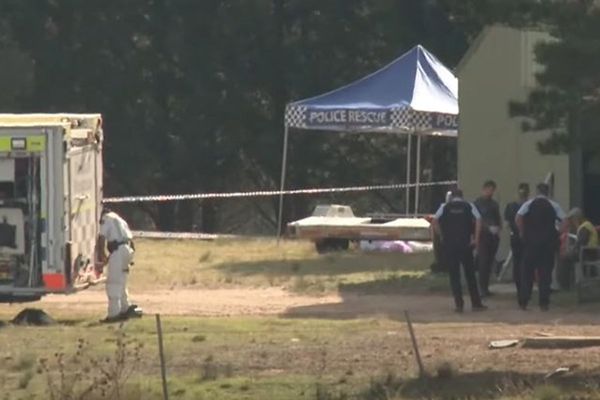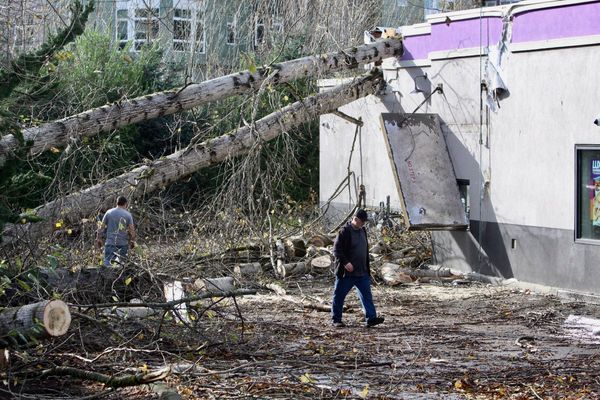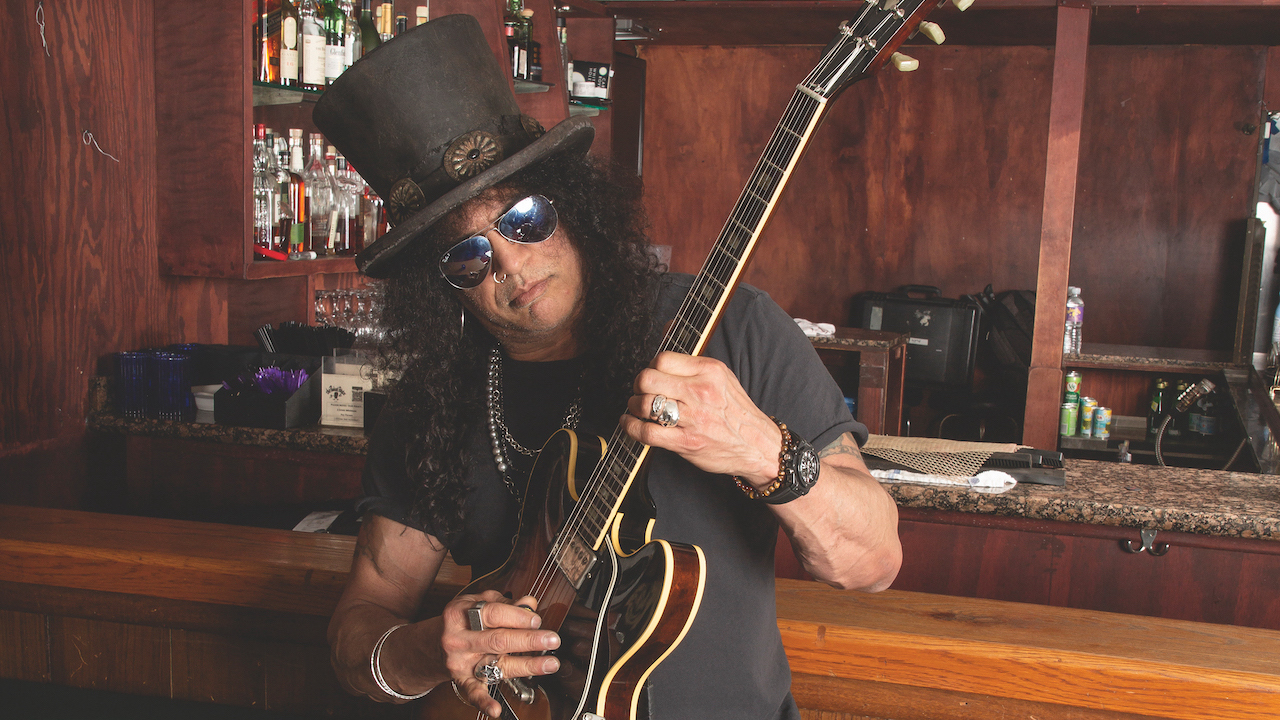
Blues guitar is a high-risk endeavor. Don’t be fooled into thinking it’s easy or safe just because there are fewer notes in the scale. If you want a safer pursuit, take up whitewater rafting, spelunking or snake milking.
An easier way to pass your practice time would be to woodshed, build up speed and throw in some neoclassical tonalities. Stick some compression and delay on it and everyone on TikTok will think you are a genius. But blues is not that. Blues is making more out of less and that leaves a player wholly exposed.
Personality counts. Charisma matters. It is like stand-up comedy; you have to tell a story, you have to tell it well, and come the end of it you have to arrive at a punchline. Quarter-tone bends have to be on-point, and pity the fool who incautiously mixes major and minor note choices, slipping out of key and souring the jam.
The audience expects. They want to hear soul in the vibrato. And if they don’t, you die. Maybe that’s why Slash has decided to record an album of (mostly) blues covers. It’s the old BMX bandit in him. No longer willing – or foolish – enough to put limb on the line on two wheels, he’s putting his reputation out there on the precipice by pulling together a blues band and welcoming a rotating cast of A-list singers to the studio for Orgy Of The Damned.
And what the hell, the band would track the album live in the studio while they were at it. This was the approach that worked so well on 4, Slash’s most recent album with Myles Kennedy and the Conspirators. On Orgy Of The Damned, veteran producer Mike Clink, who famously presided over Guns N’ Roses as they cut the most dangerous hard-rock debut of all time, Appetite For Destruction, in 1987, would be on hand to make sure the tape was rolling.
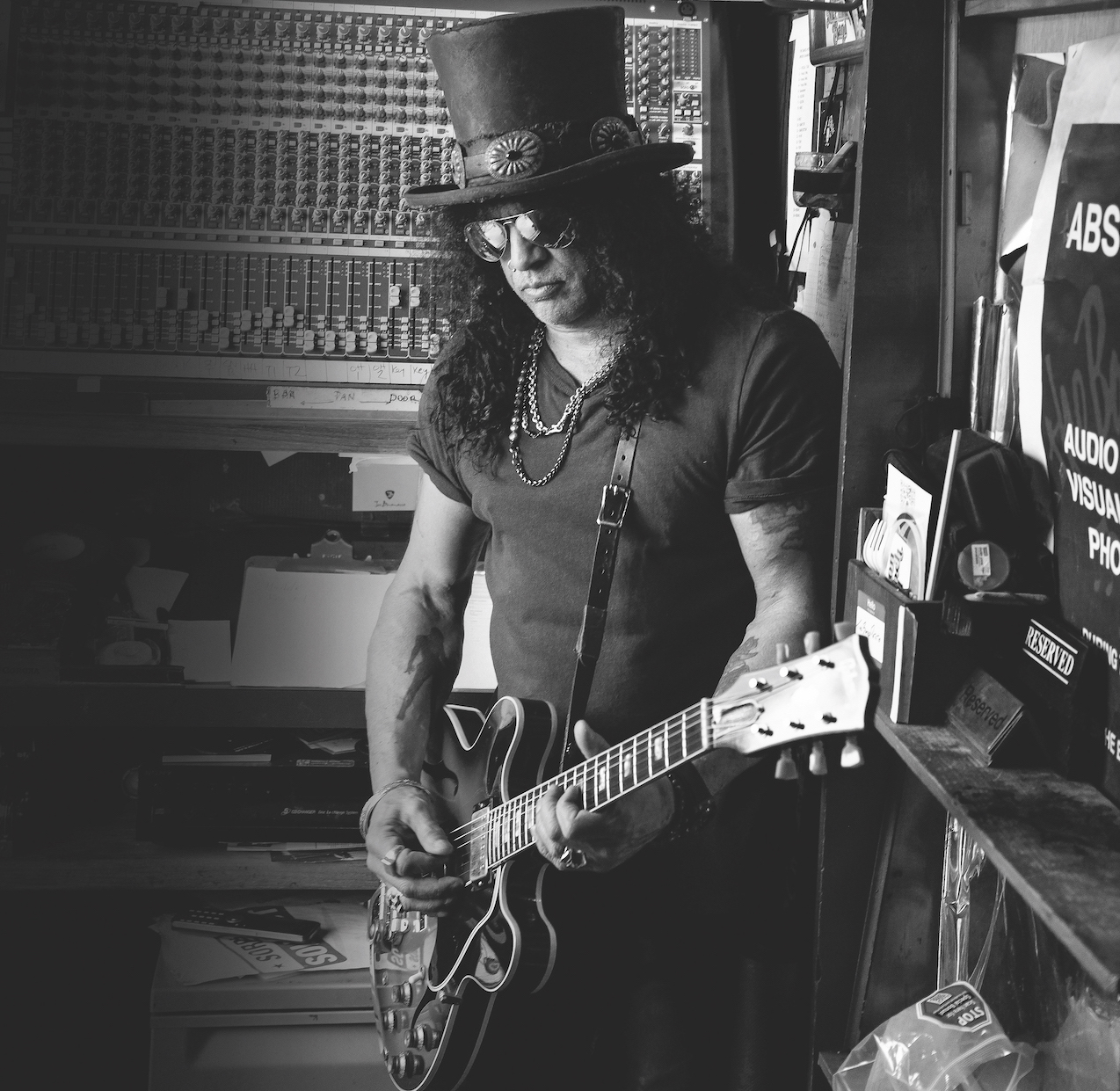
“From my first real session, back in 1986, up until now, we have progressed into a technological kind of arena where producers don’t do anything that is not safe,” says Slash, joining us on from his UK tour with Kennedy and co.
“Everything has to be mapped out. Everything has to be recorded a certain way. Everything has to be separated. Everything has to be Pro Tooled to death, and it’s really hard to find engineers who will let a band just play in a room and mic them, and just go for it! So yeah, 4 was a fun record for me, and then doing this one with Mike Clink, he just let us do our thing.”
There are a few ways of looking at Orgy Of The Damned and what the track choices tell us about Slash. There is a case to be made that there’s an autobiographical thread to this, a through-line that takes us from Robert Johnson to T-Bone Walker, from Peter Green to Stevie Wonder, from the young Saul Hudson growing up in England before crossing the Atlantic, establishing himself on the West Coast and becoming Slash – Guns N’ Roses guitarist, Gibson Brand Ambassador, rock icon. Slash isn’t so sure. At least, this wasn’t the intent.
“No, I didn’t think about it in terms of any kind of retrospective look at my upbringing, but I guess when you think about it, that’s sort of what it is,” he says. “It’s stuff that I have been influenced by, and stuff that I like from early on up until this point. I hadn’t thought about it in those terms, but it’s an interesting way to look at it…”
Alternatively, we could interpret this album as a statement on how far the blues has evolved, and how the blues has given guitar-driven rock and pop the raw materials to sustain itself, and how it can in turn accommodate those new sounds and still retain its essence. It’s one of those myths that blues is somehow preserved in aspic and resistant to change when its prime movers had done nothing but innovate ever since first putting together a I-IV-V progression.
Freddie King was injecting funk, soul and R&B into the blues way back in the ’70s with the stylistically audacious album Burglar. Gary Clark Jr., who features on Orgy Of The Damned singing and playing guitar alongside Billy Gibbons on Hoochie Coochie Man, said in TG just a couple of months ago that you don’t preserve an art form by keeping it stale.
“All the guys that came before me were pioneers in terms of moving it forward,” Clark said. “Robert Johnson. Muddy Waters. Son House. All these guys put their own flavor into this music and evolved it. We sometimes look at it as this thing to preserve, but the guys who were making it weren’t preserving it. They were trying to push the boundaries.
“If you’re trying to do Muddy Waters, that’s some big shoes to fill, and I don’t really want to spend my time trying to be that guy. People used to tell me all the time, ‘Just play the blues, you gotta preserve the blues!’ And I’d think, ‘Yeah, but look at Buddy Guy with a record like Sweet Tea – what the hell is that?’ Why would people want me to sound like Buddy Guy’s old records when even Buddy Guy doesn’t sound like that anymore? What kinda sense does that make?”
For me, it was just a fun thing; songs that I really dug, and I just did my own spin on it. But that said, it wasn’t intended to be a traditional blues record
He has a point. Not to mention that blues standards are standards because they have been reinterpreted over and over again. Who even wrote Key To The Highway? The credits go to Charles Segar and William ‘Big Bill’ Broonzy, but the story goes that those lyrics had been passed around the American South in one form or another.
Contested origin stories are part of the blues folk mythos. They deepen the mystery, as though songs have a mortal life force all their own. What we do know is that their version of Key To The Highway was recorded, cut to vinyl and became definitive, and it has since been covered by Little Walter with Muddy Waters on guitar, Eric Clapton and Duane Allman, The Tedeschi Trucks Band, B.B. King and now Slash, with Dorothy on lead vocals, and he surely won’t be the last.
Once you read who is involved with this project and the songs that they will be recording, Orgy Of The Damned, officially Slash’s second solo album, is not your regular blues record.
“For me, it was just a fun thing; songs that I really dug, and I just did my own spin on it. But that said, it wasn’t intended to be a traditional blues record,” says Slash.
“There are so many great, very traditional blues artists out there that keep that flame going, but I wanted it to be, ‘This is me, doing what influenced me to be who I am.’ And I bought all of these eclectic, different kind of singers into it – maybe just because subconsciously I didn’t want people to think I was trying to do the same kind of record that all these really hardcore blues artists do.”
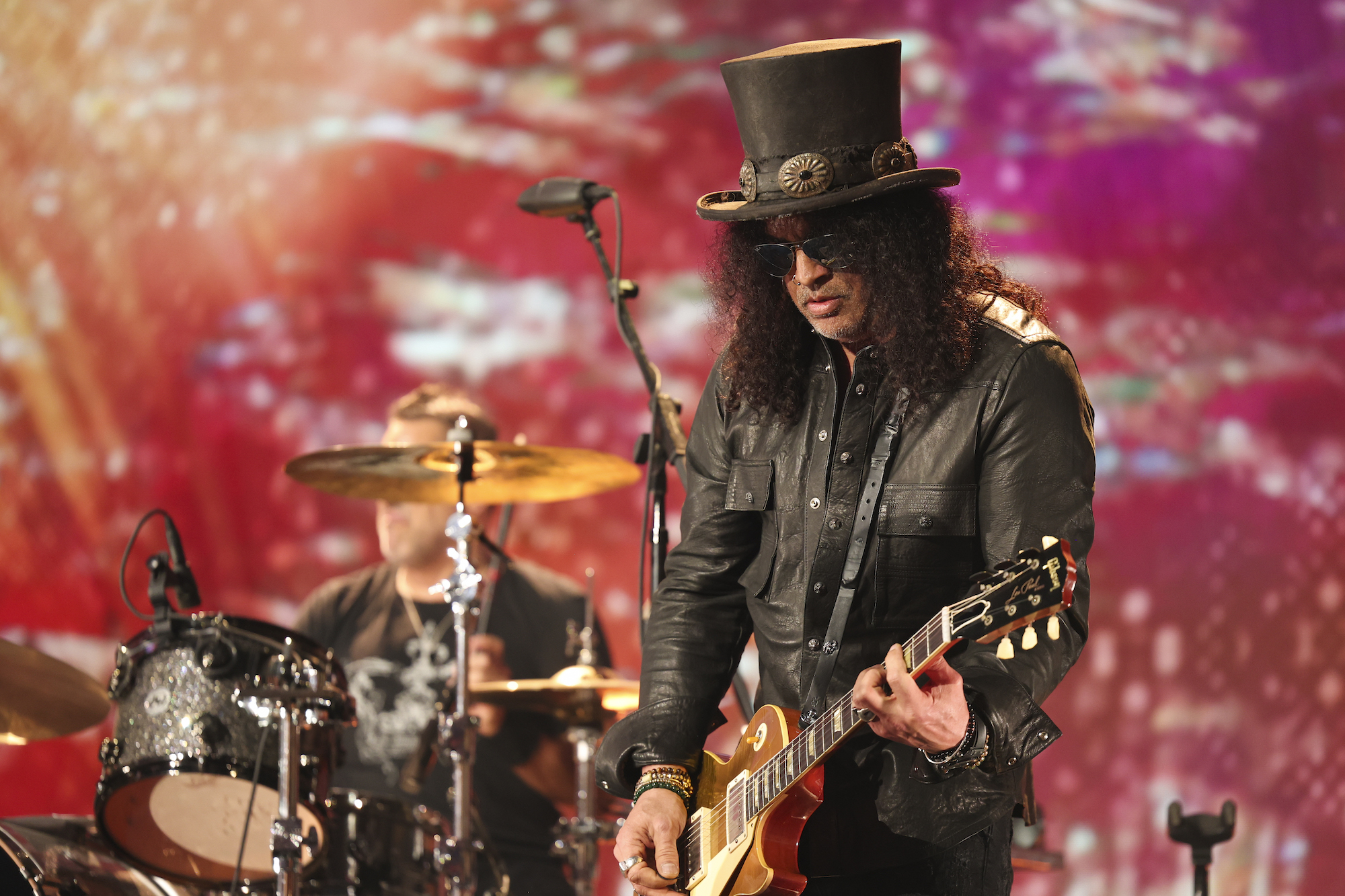
The Blues Ball is back in play
We should introduce the band. The lineup is a “reincarnation” of Slash’s Blues Ball, the guitarist’s mid-’90s blues project that gave him something to do after his exit from Guns N’ Roses. Teddy Andreadis plays keys. Johnny Griparic plays bass, with Michael Jerome on drums. It was Griparic who suggested Iggy Pop guest on the record. Tash Neal rounds out the lineup on guitar and vocals, stealing the show on the cover of Stevie Wonder’s Living For The City.
“Tash is fucking amazing,” says Slash. “I first heard him sing at a blues event that I was involved with in Los Angeles, with a bunch of cool players all jamming one night, and I was just floored, because I had never heard him, never met him. He and I struck up a relationship, and his band opened up for the Conspirators back in 2019, doing a US run, and we were just amazed by his band.
“We would go out before our set and just watch them play every single night, so when I was putting this blues thing together I thought he would be a great guy to come in and sing, and play guitar, because he is a great guitar player. He plays a lot on the record.”
No one in the band knew what this record was going to be, at least not at first. They had a list of tracks and were workshopping the arrangements before being told how it was going to go down. Andreadis will be singing live with the band, and as far as he knew, he was going to be singing on this record, too.
“I never told them that I was going to pick different singers,” says Slash. “Teddy was always the singer in the original lineup of the Blues Ball back in the ’90s, so I sort of had this thing in my mind. As we were learning the songs I had this thing in my mind, who the singers should be.”
The record opens with The Pusher, a song written by country/folk singer-songwriter Hoyt Axton and made famous with the version by Steppenwolf that featured in the 1969 movie Easy Rider. For this countercultural anthem, The Black Crowes’ singer Chris Robinson was a perfect fit.
“When I called him about it he loved that song,” says Slash. “It was cool that he was so passionate about it, and excited about coming in and doing it.”
There would be Brian Johnson of AC/DC doing his best Howlin’ Wolf on a raucous take on Killing Floor, with Aerosmith frontman Steven Tyler playing the harmonica. Demi Lovato sings on Papa Was A Rollin’ Stone by The Temptations, complementing the blues with a Motown soul classic that demanded a different treatment from the band, and, again, like Freddie King, shows how far you can push things on a blues record.
“Like I said, it’s not a real, traditional kind of blues record,” Slash says. “Obviously, there is a lot of blues on it! I don’t know about comparing it to that great, great f*cking Freddie King record, but it is off the beaten path.”
Some of Slash’s choices are no-brainers. Paul Rodgers steps up for Born Under A Bad Sign, having already sung Albert King’s The Hunter on Free’s seminal 1969 debut album Tons Of Sobs. Chris Stapleton has the chops on vocals to guest on a cover of Peter Green’s Fleetwood Mac classic Oh Well that turns into a riotous eighth-note pummelling, which by its climax is more Motörhead than British blues. And Beth Hart dropped by – literally dropped by – for a totally smoking performance on T-Bone Walker’s Stormy Monday.

“That was a funny take, because I talked to Beth on the phone; she was excited about doing it, and she called me back and had this idea about doing it in a minor key, which was a fucking great idea,” Slash says. “It made it a different version to all the other ones out there.
“We rehearsed it in minor, like, the last day of rehearsal, and we ended up doing it in minor, and then I think Ted had the idea of transposing it back to major at the end, which really was cool. So we had just learned how to do that, and we went into the studio the next day, and we were basically going to rehearse it – and Beth showed up. She just came in! She just jumped on the mic and sang it, and that’s the only take and it was a rehearsal take. It really was almost like a live jam in a club with a guest vocalist. Nobody knew exactly what was going to happen, so the spontaneity in that was great. It was flying by the seat of our pants.”
Stormy Monday is where you can really hear the benefits of recording a band live in a room. There’s a dynamic range and an energy that feels like the documenting of a performance, not just a take. When Hart dials her voice back to a whisper, Slash takes the guitar there, too.
It sounds like he ditches the pick for this and is just kissing the string with his thumb, letting the amp clean up.
“You know what? I do play a lot with my fingers, back and forth with my pick and my fingertips, but I can’t really remember,” he says, admitting that Hart’s ambush caught him and the band unaware, but these moments can be the making of a record. They give it life, especially when everyone is setup together and the tape is rolling.
“It’s great, maybe it’s because I am not that comfortable in the studio when you have too much time to sit about and think about what you are going to do,” he says. “So when you are doing sessions and you’ve got a lot of overdubbing, and you’ve got to come in again, you can overthink this stuff.
“When you are playing live, you are just in the heat of the moment, performing, just using your wits at the time. Just play! And if you’ve got a good guitar sound and the band is locked in, it sometimes provides much more exciting guitar.
“I just think playing live as a band is the only way to do rock ’n’ roll anyway. Rock ’n’ roll and blues – and jazz – has to be performed live with the band together in one room. It’s not something that could be pieced together because the feel gets lost. So I try to keep everything as live as possible.”
That might explain the pounding Motörhead treatment on Oh Well. The one-two punch of Slash and Neal’s guitar turns it into a powerhouse jam. Listen to it on headphones and you will pick out all these overtones, moments of illusory musical information. It sounds like there’s an acoustic guitar buried deep at the back of the mix, doubling the riff for texture, but there’s not. There might have been had they had more time, but overdubs for this album were kept to a minimum.
You might hear a couple here and there, such as the talkbox work on Papa Was A Rollin’ Stone, which was rehearsed with Slash using a wah pedal and talkbox at the same time. Now, listen back to Oh Well again and what do you hear? Yeah, the helter-skelter take is classic Slash – getting carried away with himself, more ‘Fast’ Eddie Clarke than Big Bill Broonzy – but there is something off-menu as far as guitar choices go.
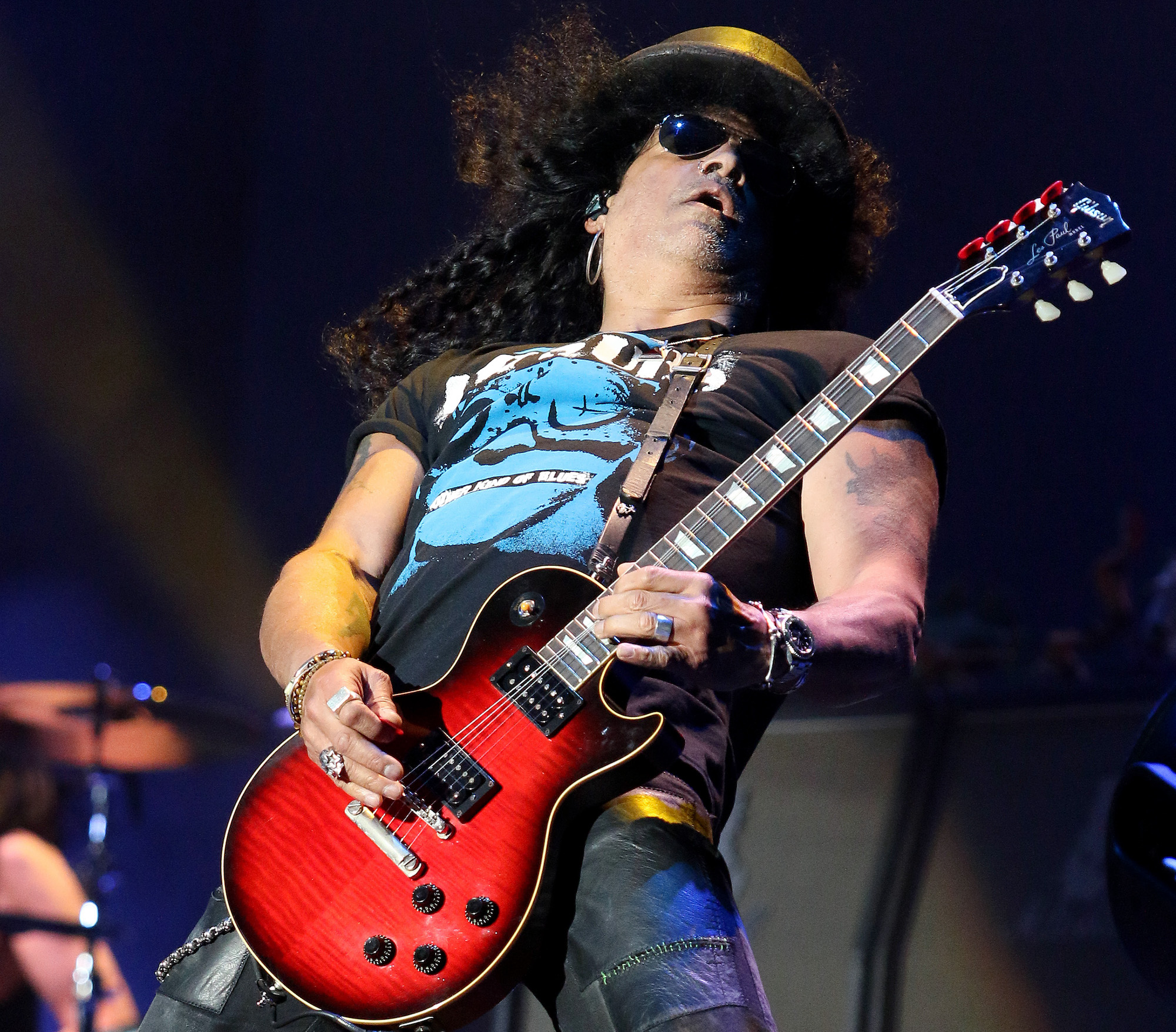
“Yeah, for me that song was one of my favorites,” he says with a chuckle that’s as good as an admission that, yes, he did get carried away.
“I remember when they used to play it on the radio back in the ’70s, and I always loved it. Y’know, I’ve jammed the riff a few times but I have never played the full song. My take on it is a little bit more hard-driving than most, right? It was a hell of a lot of f*cking fun to play. And I’m playing a Strat, too, which you never hear me use.”
Wait. Record scratch. Time out. He what?
“It just sounded like a Strat to me,” he says. “I used a Strat on that, and I used an old ’50s Tele on Living For The City.” You think you know someone and then this…
Old, new, borrowed and blue
As it turns out, doing Orgy For The Damned was as good excuse as any to play around with his rig.
“Anything, everything is an excuse to buy a new guitar!” protests Slash. This in part led to his new signature guitar amp collaboration with Magnatone.
In the video for Killing Floor, Slash is playing a 1963 Gibson ES-335. It’s Neal playing the Les Paul. And your eyes did not deceive you, those were vintage Fender tube combos in the background.
“What happened was that, when I decided I was going to do this record, I pulled out a bunch of my old vintage combo amps and whatnot because I knew it was going to be a more laid-back [recording process],” Slash explains. “It is still sort of a rock ’n’ roll tone. I just wanted it to be less Marshall-y. And have a little bit more of a clean, gritty sort of a sound to it. I had those amps that I pulled out, and then I pulled out some vintage guitars I had.
“I’m funny with amps. I have obviously been a Marshall guy forever, and I love Marshalls – nothing gets the Marshall sound, right? But I also love old Fender Deluxes.
“I love old Fender amps for lots of different kinds of things, and they pop up here and there for clean stuff on a record or whatever. But I pulled them out, a couple of old Fender ’50s Deluxes. I had a Dumble Fender Deluxe that he (Alexander ‘Howard’ Dumble) built for me, just before he passed away. I think it was the last one he ever built. And I had an old Marshall 50-watt, which I don’t usually use but I thought might be applicable for this.”
Enter, the Magnatone. There was a moment’s pause, panic across the internet, when the news broke that Slash was teaming up with Magnatone for a signature amplifier, that this amp would be in his backline when touring with Kennedy and the Conspirators. The official press release never mentioned a continuation with Marshall Amps. Slash leaving Marshall seemed unthinkable – and it was. A hastily released clarification was issued.
He was adding to his backline, not decommissioning the Marshalls. When his signature Magnatone SL-100 arrived, finished in green snakeskin vinyl, it was clearly inspired by vintage Marshall Super Leads, with traditional British valve amp accoutrements such as the quartet of EL34s augmented with switchable Lo and Hi gain modes, a tube-buffered effects loop, and a master volume because 100 watts of this could take some heads off. The collaboration on the amp started here.
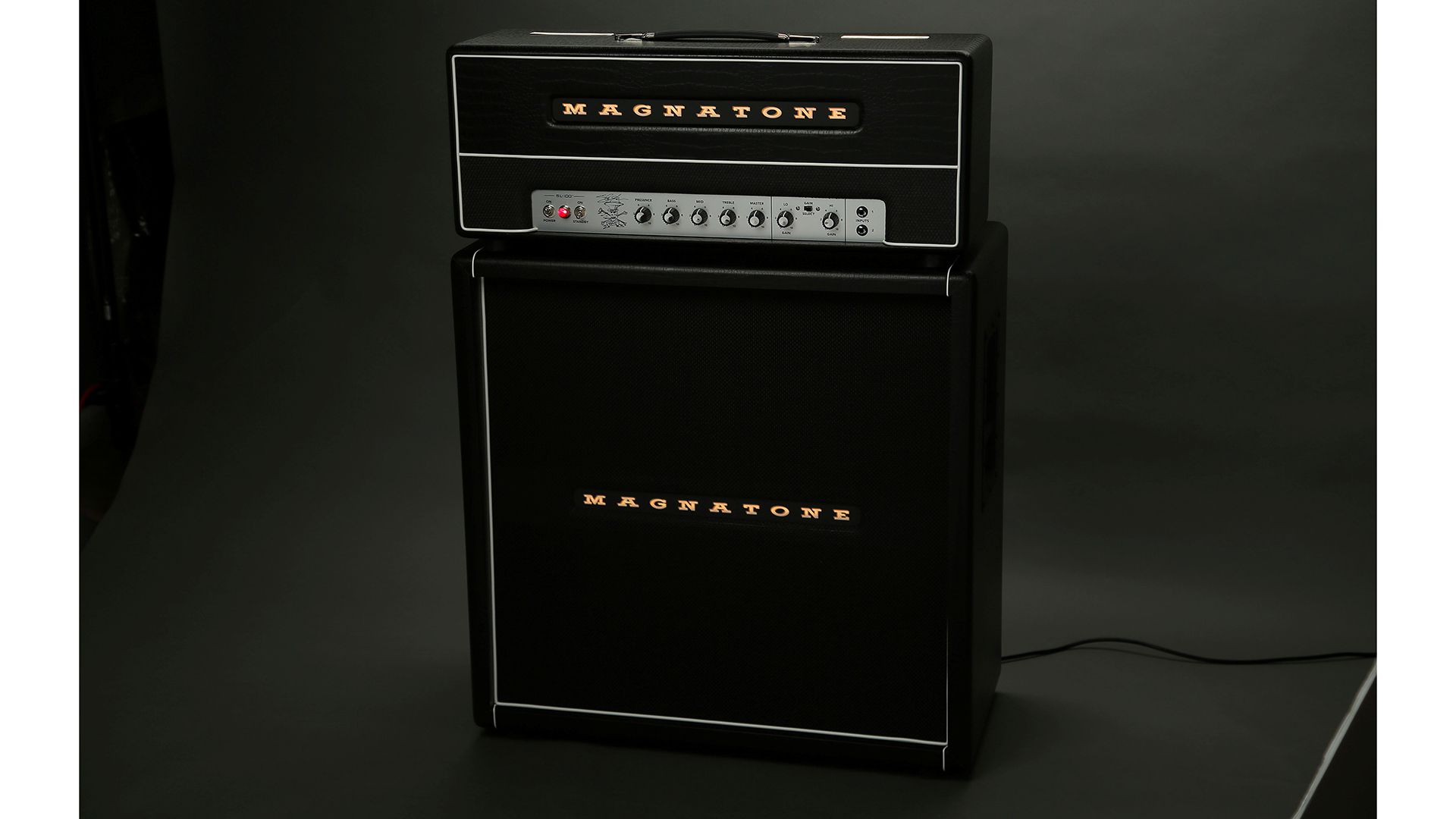
“Funnily enough, I had this Magnatone M-80 50-watt that Billy Gibbons gave me a long time ago that I had never used before,” Slash says. “I had never even heard it! He gave it to me, I put it with a bunch of stuff and never listened to it, and so then I had a Vox that I brought out. I wanna say something else, oh yeah, a vintage Mesa/Boogie, like, an early Mesa/Boogie.
“I was trying all these amps, and going through the songs, and it was all very laid-back and relaxed, and I tried that Magnatone and it sounded amazing.
“Everyday I would say, ‘Okay, we’re going to play this song and I am going to try a couple of amps with it, a couple of different guitars.’ And I ended up back at that Magnatone. I ended up doing that whole record with the Magnatone and ended up designing an amp with them as a result.”
One of my biggest pet peeves about my playing is intonation
The moral of this story is that, when the Reverend Billy F. Gibbons gifts you an amplifier, you put it in rotation. Also, do whatever you can to get him to guest on your record. Gibbons’ turn on Hoochie Coochie Man is a high-water mark for the sessions and it gives one of Chicago’s greatest blues standards a little Texas flavor, with Gibbons playing rhythm guitar, singing, and taking one of the solos.
“Billy, he’s just hands down one of my favorite guitar players, ever since I first heard him back when I was a kid, and he just has this laid-back kind of approach,” Slash says. “There are three of us doing solos on Hoochie Coochie Man, but he is the one that’s got the clean tone.
“I think he's the third solo in. That was something that he did just off the cuff, and it is so note perfect that I actually had to learn it! Ha! Just to learn it! Because his selection of notes on that little solo are just so great, not to mention his vocals are great. And also the same with Gary Clark Jr. He and I played back and forth, but his solo is so indicative of what makes him such a fabulous blues player.”
Riding with the King
What makes a great blues player? There are no rules per se. You don’t need expensive guitars.
Robert Johnson inaugurated the art form with a Depression-era Gibson Kalamazoo flat-top. A suit is traditional but non-essential. You don’t need heavy strings and a bear trap grip for a fretting hand.
Billy Gibbons is proof of that. His electric guitars are strung up with .007s after some friendly advice from B.B. King that amounted to: “Why are you working so hard?” But that was exactly the opposite lesson Slash took from B.B. King, whom he was lucky enough to jam with at the Royal Albert Hall in 2011, when he joined the King of the Blues with Ronnie Wood, Derek Trucks, and Susan Tedeschi on The Thrill Is Gone. B.B. King makes a great blues player.
“He was the guy, when I was a kid, way, way before I ever thought of picking up a guitar, he was the first traditional blues artist that I was exposed to,” says Slash.
“My grandmother played me B.B. King and it stuck with me. I heard a lot of blues artists after that, all around the family and stuff, but B.B. King, the first time I ever heard it, it really stuck with me, and so he ended up being my favorite blues guitar player out of all the greats that I really dig. He is sort of my top guy. And I think one of the reasons I love Jimmy Page is because he plays very much like B.B. King.”

Slash played with B.B. King on a couple of occasions over the years, but the first time the occasion escaped him. It was one of those LA nights that got lost to the drink.
“I can barely remember it!” he says. “But he was so cordial to me, and so almost fatherly and nice and generous with his time. That had a positive affect on me. And I played with him a couple of times over the years, and the last time I played with him was at the Royal Albert Hall, and Ronnie Wood was there.
“It was just a lot of fun. I remember being a little bit nervous, and not really feeling comfortable trying to play, but I was there, so… whatcha gonna do? But it was a really nice moment to spend with him. He was a really sweet guy, and a genuine road dog.
“This was a guy who spent 70 per cent or even 80 percent of his entire life working, and I have always admired that. I've probably modeled myself after that because I am a total workaholic. I go, ‘Well B.B. did it, so I can do it!’ Anyway, it was just a great moment. Just being in the same space as one of your all-time favorite and most influential artists.”
B.B. King was a stickler for details. His many Gibson ES-variant Lucilles were modified to remove the f-holes so that feedback wouldn’t be an issue. He took a pride in his intonation, took every precaution; his bridges were augmented with a TP-6 tailpiece with fine tuners. His ear was as good as a Peterson Strobe Tuner.
B.B. might have given Slash the appetite for road miles, but maybe this is where he gets his appreciation for good intonation at all times. You would be hard pushed to call Slash neurotic, but on matters intonation he is not far off.
“I don’t know, but my ear is pretty sensitive to being out of tune, and I appreciate you saying that,” he says.
“That’s a compliment, because one of my biggest pet peeves about my playing is intonation. Sometimes a lot of it has to do with in-ears because you can go so high that you can’t hear it anymore because you don’t have the space of the room to really fill out the note. My pet peeve with intonation is something that I am still working on!”
Lightnin’ in a bottle
Not all of the tracks on Orgy Of The Damned were chosen by Slash. It was at Iggy Pop’s request that they covered Awful Dream, the old Lightnin’ Hopkins tune from 1960’s Mojo Hand.
A more obscure country blues cut, Slash wasn’t initially familiar with the arrangement, such as it is; Hopkins' style is so spare that invites reinterpretation, as though his songs arrived fresh on record already as blues standards. It’s like there’s dust on it.
Listen to the original and you can hear why it works for Iggy Pop’s voice. Maybe it was Hopkins’s choice of words, or how his acoustic guitar had this sleepwalking slow shuffle rhythm to it, or maybe his voice, which managed to have this reedy top-end and yet be canyon-deep at the same time, but he was one of those musicians who gave the blues a supernatural feel, as though it was coming from the beyond – a haunting.
Slash and Iggy are faithful to that spirit, if not the arrangement, making it sound as though the guitar itself had been exhumed from the Mojave before being brought up to pitch and recorded.
Slash says of the track: “Iggy came in and he and I just sat on stools,” Slash recalls. “And I hadn’t ever actually learned the song because it was so loose to begin with; I just did my own thing, how I remembered it would go. Iggy had all the words down and we sat and jammed it. I think we did it a couple of times, and then just did it from top to bottom live like that. It was a really great outlet for Iggy. He really cherished the moment to do that, and I love that feeling.”
Lightnin’ Hopkins played Gibson and Harmony acoustics, but Slash’s choice for Awful Dream was more inspired by Lead Belly and Blind Willie McTell – a Fraulini 12-string with a longer baritone scale.
“I got turned onto these guitars by Cher’s son,” he says. “These 12-string guitars were built like baritone acoustic guitars in the ’40s. So they are tuned really low, and they’re 12-strings. Just amazing sounding.”
Hendrix agreed. In the 1973 documentary Jimi Hendrix, there is footage of him playing Hear My Train A Comin’ on a downtuned Zemaitis 12-string acoustic. And there’s something undeniably gnarly about a downtuned 12-string – those low open strings sound like a death rattle.
Spare a thought for Teddy Andreadis, who will be singing these tracks when the band takes to the stage at Slash’s S.E.R.P.E.N.T. Festival, which kicks off in July and tours across the US, with Warren Haynes, Keb’ Mo’, Christone ‘Kingfish’ Ingram, Samantha Fish, Larkin Poe, Robert Randolph, and Eric Gales all confirmed among the lineup.
S.E.R.P.E.N.T. stands for Solidarity, Engagement, Restore, Peace, Equality, N’ Tolerance. It’s a celebration of the blues, a chance to play these songs live, but it’s also to raise money for good causes, with a dollar from each ticket sold going to charity.
“We are trying to do something that supports people coming together and not pointing fingers at people, and ostracising different races, people of different genders, all that kind of shit,” says Slash. “That’s the driving force behind the festival, but blues is all about bringing people together.”

Looking at the bill is proof positive that there is no one way to play the blues, and that’s the point. If there was, it would be easy. But it’s like the great contemporary jazz guitarist Julian Lage says: everyone has their own shuffle that’s unique to them. Use yours.
That rhythm is just as important as phrasing a lead, note choice, tone. Listen to the pocket on Hoochie Coochie Man. Listen to Slash’s leads on this record. None were worked out beforehand. You’ve got to know where to start, where to finish, and which notes to avoid. All else is up for grabs. Make it your own.
If you just listen to blues players, man, there’s so much personality and individuality between all these different guitar players, and it's one of these things I love about it
“That is what’s great about blues guitar,” Slash says. “It’s all the same chord changes. It’s all more or less the same notes, but it’s just the way that the individual’s personality chooses how to play them, and that’s what makes all these blues guitar players so fucking great. You can really hear their personalities in their melodies, and in their solos, and in their rhythms, and just the way that they play it.
“It's such a diverse canvas, because you just have these three chords, 12 notes and a couple of different octaves, and the different things that people do with them are so much more different than all the technical players out there who are spending so much time on all this technique, and all of these fucking different kinds of picking techniques and scales. It’s all brilliant. It’s amazing. But it’s hard to tell a lot of those players apart because they are all doing more or less the same kind of thing at blinding speed.
“If you just listen to blues players, man, there’s so much personality and individuality between all these different guitar players, and it is one of these things I love about it. It’s not something you can necessarily pick up from watching tutorials on YouTube. It’s just something you feel.”
- Orgy Of The Damned is out now via Gibson Records.
